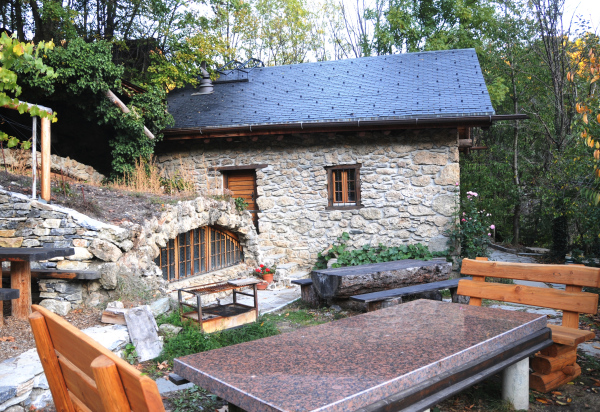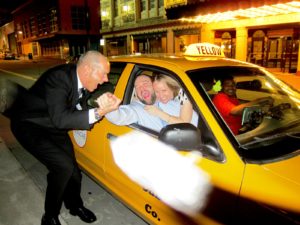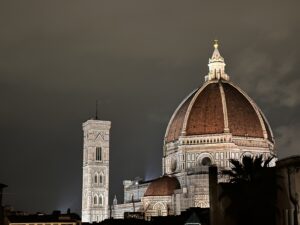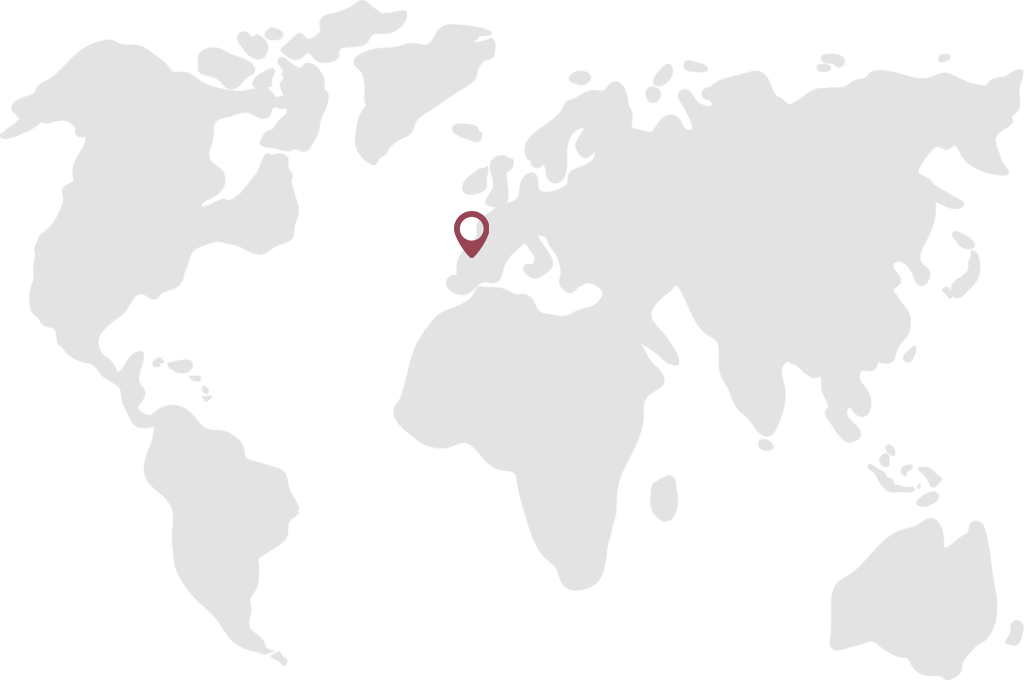It is mid October. The sun is about to dip below mountains, but the light is still bright. Leaves have autumn colors. The white Alps look gorgeous. The temperature is crisp, in the low 50’s. The train heading to the Canton of Valais passes golden church spires perched on hillsides, green plastic wrapped hay bales, and avalanche chutes that resemble tear drops falling off steep mountainsides. Swiss flags fly from houses. The train snakes through tunnels and over bridges that cross gray-green glacial rivulets.
The train conductor wears a beautiful tie. More than an hour out of Zürich, he speaks French instead of German. I suddenly see vines – gold and green – and plentiful vineyards stacked on terraces high on hillsides and enclosed within misshapen rock walls.
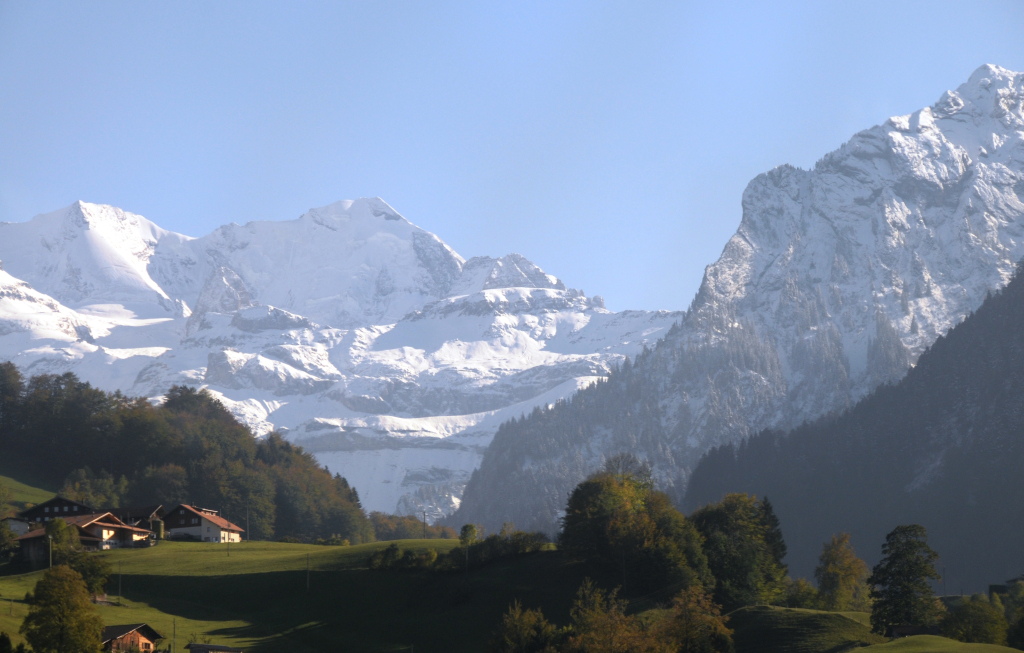
In the town of Sion I wait outside the train station across from the local boulangerie, patisserie, confiserrie shop. Mr. Louis-Bernard Emery, manager of the Cave Emery winery, pulls up in his Mercedes, exactly on time. He wears a black wool sweater and black loafers covered with flecks of white paint from work he kept busy with that afternoon.
Louis-Bernard: “Seven million people are in Switzerland. That’s half of Paris. We are very little. The Valais is the biggest producer of grapes. Everything is controlled in Switzerland. From the beginning. You are not allowed to make a plantation everywhere. You have to be approved. Then the quantity is controlled by the state. You have a permit to pick up to 1.3 kilograms of grapes per square meter.
“The vineyards are not flat, they’re mountainous. Ninety percent of grapes are picked by humans. Like you and me. That’s a good thing. It’s in my blood, something from the wine. At the moment I’m happy. In Valais, Syrah and Pinot Noir are the most important grapes for red wines.”
After ten minutes he parks before a warehouse that is partly built into a mountainside. We walk outside and along a narrow dirt path that leads to his ‘Cave.’ This is a dining nook he built inside the mountain.

“Everything here is with solar power. No electricity. It’s a little place for clients. We try to give an atmosphere. Follow me, just mind your head.”
He leads the way into a subterranean cave that resembles an ancient grotto. The wood tables have fractal edges and are beautiful – long, polished and showing grain. The walls look carved from cavernous rock, but comprised of schisty soil.
He pours us each a glass of wine, then toasts.
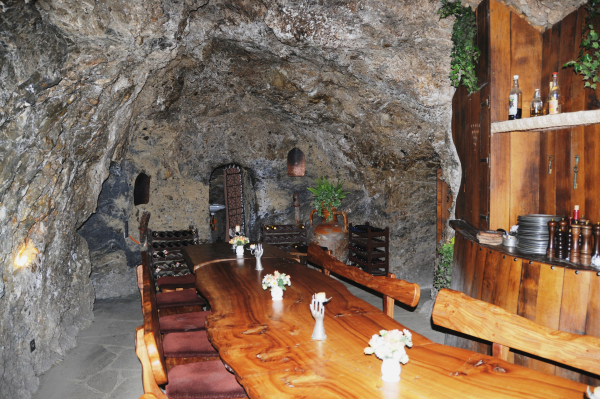
“That’s Heida, which is a typical wine from Valais. White wine. Valais is very sunny, dry. Okay, take we are going to another place. I show you something.”
He pivots one hinged wooden counter to reveal a spiral staircase below it. This leads downstairs. We descend to another room.
“Normally when people finished with the raclette, which they eat there, I say come on let’s go and have a coffee and dessert. They come here.”
He fills our glasses.
“Every name for my wines coming from Greek mythology. I studied four years Latin and Greek.”
He has given his wines names such as Adonis, L’Ambroisie, Hélios, and Les larmes d’Heracles (the Tears of Hercules).

“I’m not a very modern man. I’m romantic as well. Last week I had people flying here. We made raclette. You know Yves Rossy? Rossy is a crazy man who has flown across the channel with jet packs, you heard? We had last week Yves Rossy and Claude Nicollier here, an astronaut from NASA. Been four times to space. This only Swiss who has gone up. He has gone up to make a reparation on Hubble. We have plenty of celebrities coming here.
“All these directors, they’re fed up with the Hilton. They want something different. They are very grateful coming here. A lot of people come here. Like the Prince of Monaco or Barbara Hendricks. They come to see something special. Once when you eat something like home cooking, you appreciate it. Appreciate also the atmosphere. That is something that you cannot get in a big hotel with a waiter all in black and white, eh?”
He fills our glasses again. We walk to where, at the push of a button, a hidden electric ramp opens upward, revealing a passage to another room.
“When I was 30 years old, a very young director, I had some friends who said, well, we have to make something in the stock exchange, because the stock exchange is very good. And the year after that it crashed. I decided then the bank is not for me. But if you come in 20 years, this will still be here, not like paper money from UBS or Wall Street. When I will be old, my four children will still have it. It will still be here.”
We step outside his cave to view steep peaks. The chill of night has come. The view below shows symmetry and order in the town. But on this mountainside, a scent of wildness, chaos, and disorder prevails.
He hands me a bottle of Diolinoir wine.
“The vineyards are planted up to 600 meters. The Heida that we drank is very special from the other part of the Valais to the north. It’s the highest vineyards in Europe. 1,200 meters high.”
He drives me back to the train station after our splendid hour exploring his magical cave.
” It’s ten past six. It means you make your train. I wish you a nice travel.”
